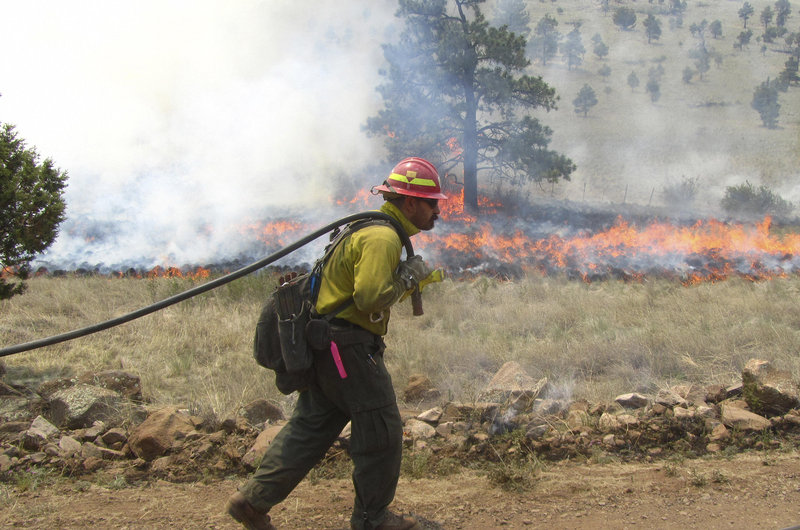ALBUQUERQUE, N.M. – A wall of smoke advances across a vast swath of rugged country in southwestern New Mexico where the nation’s wilderness movement was born nearly a century ago.
From the air, the smoke stretches as far as the eye can see. On the ground, firefighters talk about the steep canyons that keep them from directly attacking what has become the largest wildfire in New Mexico’s recorded history and the largest currently burning in the country.
Sure, things might look bad. But to land managers and scientists, the record-setting blaze represents a true test of decades of work aimed at returning fire to its natural role on the landscape — a test that comes as many Western states grapple with overgrown forests, worsening drought and a growing prospect for more megafires.
The Whitewater-Baldy fire has destroyed a dozen cabins while marching across more than 354 square miles of the Gila National Forest. A pair of lightning-sparked fires grew together to form the massive blaze.
Unlike last year’s megafires in New Mexico and Arizona, this blaze is burning in territory that has been frequently blackened under the watchful eye of the Gila’s fire managers.
Starting in the early 1970s, the Gila has been leading the way when it comes to implementing such an active fire management strategy. Instead of immediately dousing flames in the wilderness, forest managers have let them burn as long as conditions are favorable.
The question that the Whitewater-Baldy fire is expected to answer is whether that strategy will pay off with more natural, less intense fires.
“There’s a great opportunity here to study a fire like this,” said Matthew Rollins, the wildland fire science coordinator with the U.S. Geological Survey’s National Center in Virginia.
“The opportunity exists to look at how this fire has behaved differently in terms of vegetation mortality, effects on wildlife and fish habitat and water quality,” Rollins said. “We can study how it burned in the wilderness relative to areas with other types of fire management strategies and other types of ignition patterns.”
So far, the word from the fire lines is that the majority of the 227,000-acre blaze has burned with low to moderate intensity, not the kind of near-nuclear strength that was exhibited last year with the Las Conchas blaze in northern New Mexico. In that case, entire mountainsides were vaporized, leaving nothing behind but the white ashy skeletons of what used to be trees.
Copy the Story Link
Send questions/comments to the editors.



Success. Please wait for the page to reload. If the page does not reload within 5 seconds, please refresh the page.
Enter your email and password to access comments.
Hi, to comment on stories you must . This profile is in addition to your subscription and website login.
Already have a commenting profile? .
Invalid username/password.
Please check your email to confirm and complete your registration.
Only subscribers are eligible to post comments. Please subscribe or login first for digital access. Here’s why.
Use the form below to reset your password. When you've submitted your account email, we will send an email with a reset code.